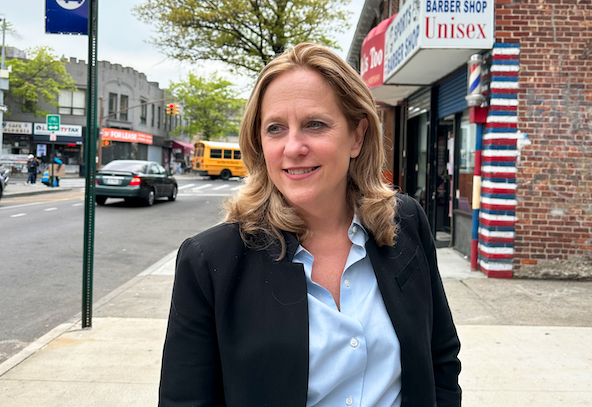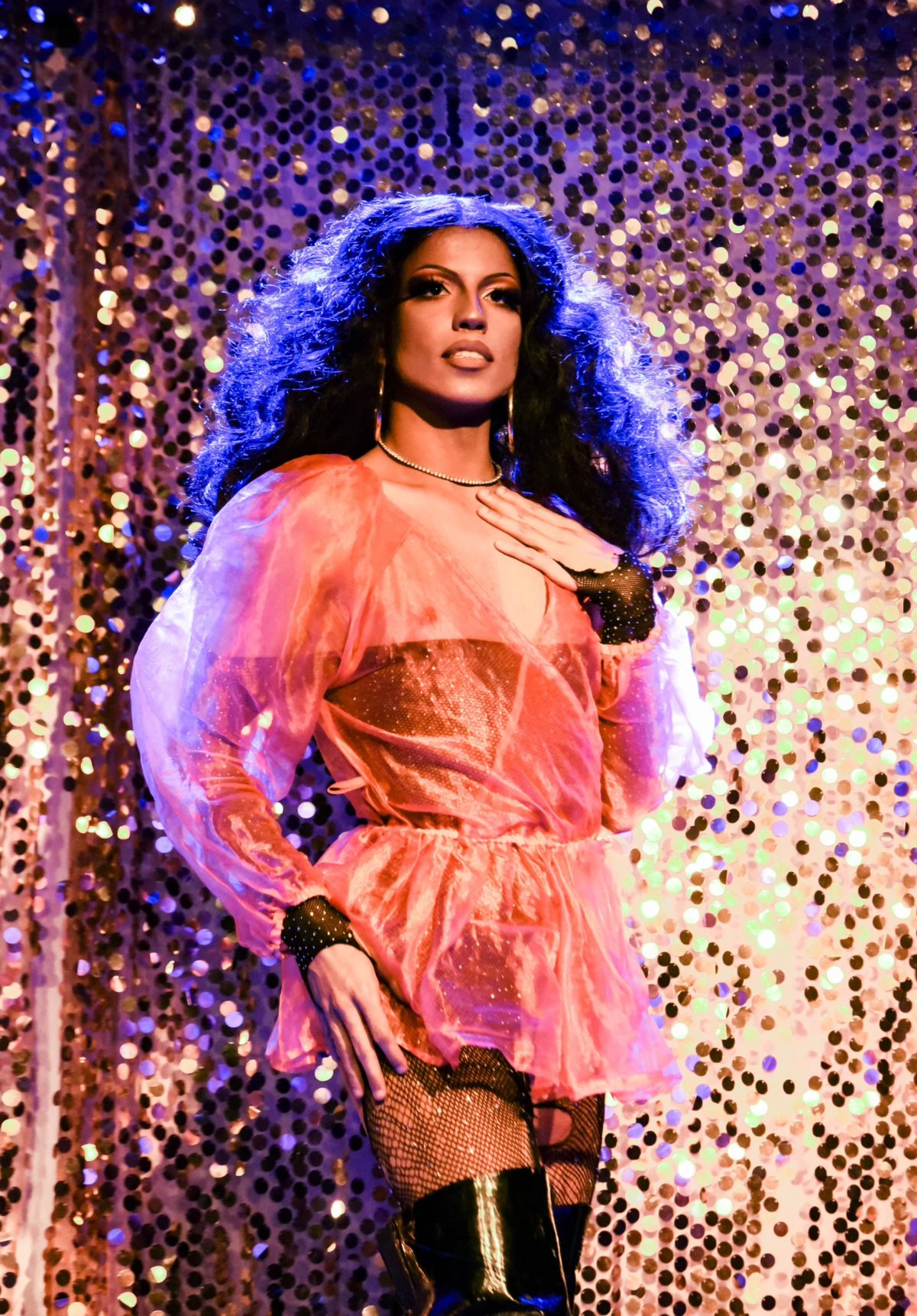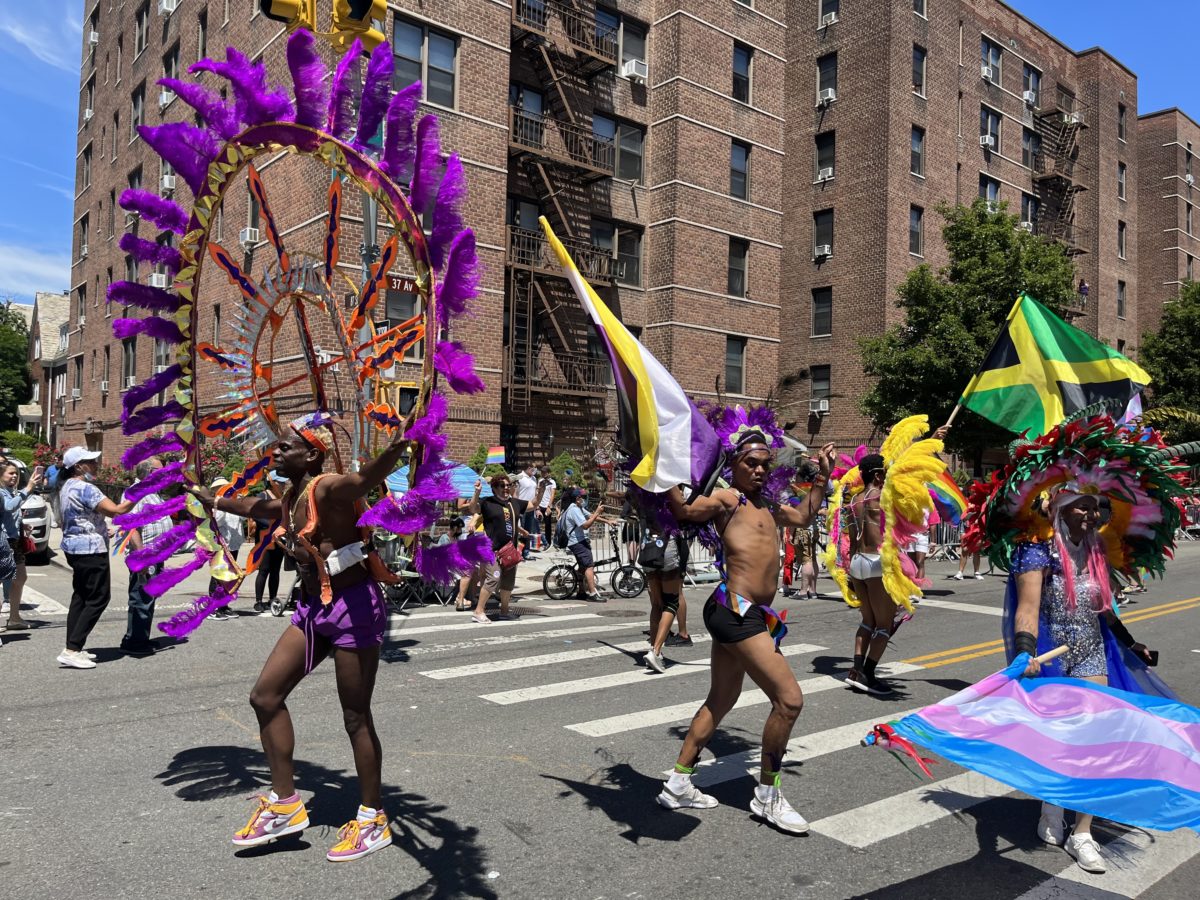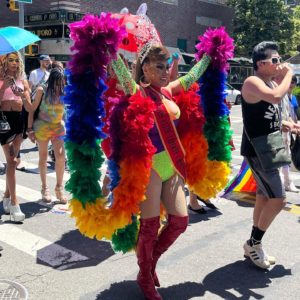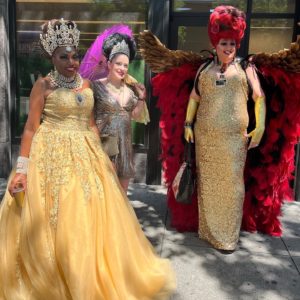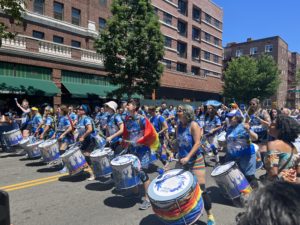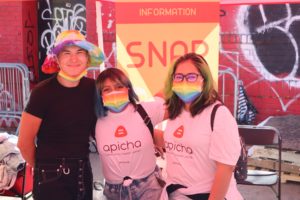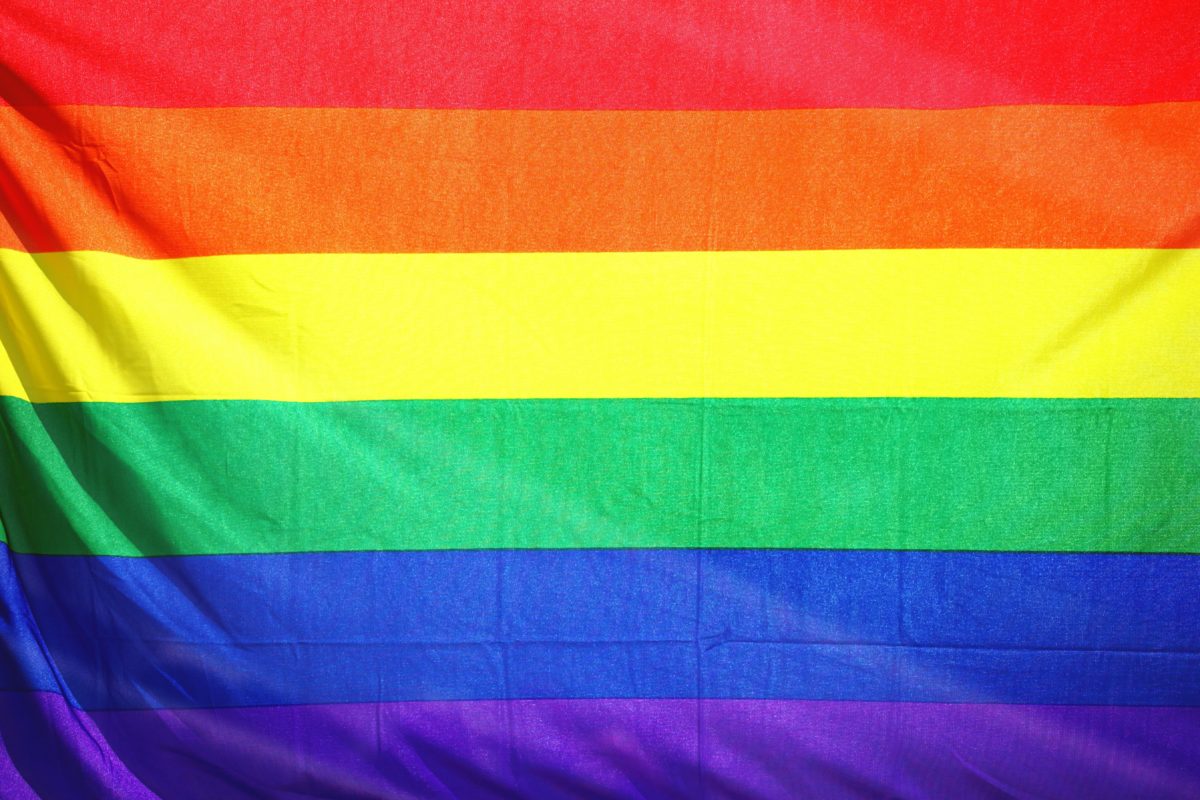By Stephanie Meditz
news@queensledger.com
With Pride Month well underway, Brooklyn’s drag performances are more lively and glittery than ever before.
Three queens, Purss’ophonie, Piper, and Adra Quartz, shared their experiences in the Brooklyn and Queens drag scenes as well as their own stories of self-acceptance and expression.
All three queens revealed that, although drag allows them to transform both physically and mentally, their drag personas give them feelings of freedom and confidence that remain even after they remove their makeup.
Emilio Moreno, known by their drag name, “Purss’ophonie,” never felt inclined towards drag until they hit a rough patch in their life, rediscovered RuPaul’s Drag Race, and felt represented by the queens on the show, specifically Bob the Drag Queen.
The 29-year old’s drag persona is influenced by the Black and Brown communities that raised them.
The name is a reference to Persephone, the Greek goddess of the Underworld, but it’s also a literal reference to a phony purse as a nod to their roots.
“It’s basically an homage to when the culture gets stolen or we can’t afford it and we have to get our own bags,” they said. “So instead of coming from the underworld, I come from the sewer with my fake bags. No spring.”
Moreno’s performances are usually dance routines to Black, Brown, female, or queer artists, such as Doechii, Azealia Banks, Beyoncé, and Alex Newell.
Pedro Suarez similarly crafted his drag persona, “Adra Quartz,” after a difficult time in his life.
Doing drag was only a thought in the back of his mind until a friend gave him the opportunity to try it out using her makeup.
Suarez got his start after a New York City queen, Iodine Quartz, adopted him as her “drag child,” meaning she took him under her wing, taught him how to do drag makeup, and introduced him to other queens.
He gave his first drag performance on his 22nd birthday at a competition in Philadelphia, which he won.
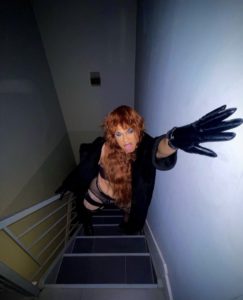
Adra Quartz struts her stuff in one of her favorite outfits.
Suarez earned a BFA in dance from The University of the Arts in Philadelphia, Pennsylvania, and graduated from Frank Sinatra School of the Arts in Astoria in 2017. His performances reflect his background as a dancer and artist.
“I think of myself more as a choreography queen,” he said. “Like I’d rather pull out an 8-count than do a little split. And I feel like you’re just showcasing a little bit more talent. You just made this up, whether it be on the spot or prepared in your head.”
Audrey Long, a performer under the drag name, “Piper,” also has roots as a competitive dancer.
Originally from Fort Worth, Texas, the 23-year-old discovered drag through RuPaul’s Drag Race and regularly attended drag shows in college before trying it out themself.
They see drag as an outlet for the performer in them, and their performances typically include high kicks, splits, audience interaction, and high-energy movement inspired by early 2000s pop divas like Britney Spears.
Long is a graduate student in social work at New York University to become a gender therapist.
“I think, being a queer kid in a small southern town, New York was always the epitome of really making it,” Long said. “Like getting out of the small town and moving to the big city was always something I had thought about but never really thought that it was possible.”
The Brooklyn drag scene, which described by Suarez as “disgusting in the best way,” is characterized by unpredictable, often shocking performances and a strong sense of community.
“There are no limits to the drag in Brooklyn,” Moreno said. “Meaning I’ve heard stories of people doing crazy stuff onstage and actually getting physical reactions from the audience.”
They described one performance in which a queen acted as a human wrecking ball during a crowded barbecue at The Metropolitan in Williamsburg.
The scene’s openness to a variety of unconventional performances, however, is a testament to its diverse members and the unconditional support between them.
“Where everyone comes from, they bring a little bit of themselves,” Moreno said, referencing the personal and cultural relevance behind many drag performances. “And I feel like Brooklyn is a place where they’re celebrated rather than tolerated.”
Long shares the sentiment that Brooklyn is a hotspot for some of the strangest drag performances, but they also see it as a land of opportunity for newcomers to drag and a safe place for performers to showcase their art without fear of judgment.
“In Brooklyn, you can do anything and people will still live for it,” Long said. “You can literally stand there to cricket noises for four minutes and the crowd will go wild and you’d probably make lots of money. It’s the silly, fun things like that that really make me love Brooklyn as a borough and as a community scene.”
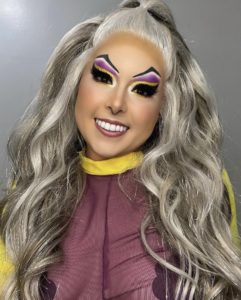
Piper’s look is completely self-styled.
As a nonbinary drag performer, Long expressed that although many drag spaces are centered around cisgender men, they have never felt excluded from the Brooklyn scene.
They see drag as an outlet for expressing the femininity that they don’t always present, and performing as Piper has boosted their overall confidence.
“Piper has taught Audrey a lot,” they said. “I feel more comfortable in myself. Having Piper be able to wear the frilly costumes and put on all the makeup, it makes me feel like I have more of a balance in my day-to-day identity.”
Suarez, who is masculine-presenting outside of drag, also uses drag to express another aspect of his identity that often goes unseen.
“My drag is a different side of who I am,” he said. “Once the wig and the lashes go on, then you definitely see that personality switch.”
Such self-acceptance and expression are major components of Pride Month in the drag scene.
“To me, I think Pride is almost like renewing your wedding vows,” Long said. “Just that reaffirming of how grateful I am to be queer and be able to live my authentic self with the people that I love.”
However, Pride is still fundamentally a call for action and political change.
In addition to performing at bars, parties, and parades, many New York City queens participate in political activism or community-based events like those in public libraries.
“Pride month is definitely still a resistance movement and there’s a lot of work to be done in our society as well as our own community in terms of misogyny, transphobia, racism, classism, and a lot of gatekeeping,” Moreno said. “We have come a very long way so we do get the privilege to celebrate where we’re at, but it’s always a reminder that there are people that are still marginalized.”
For Moreno, the very act of doing drag is a political statement, especially given the beginning of the gay liberation movement.
“There are people that don’t even have rights in this world the same way that we do,” Moreno said. “And we have to fight as best as we can to just make sure that we’re bringing everybody up… It was one brick thrown at Stonewall, but fifty drag queens behind it.”
